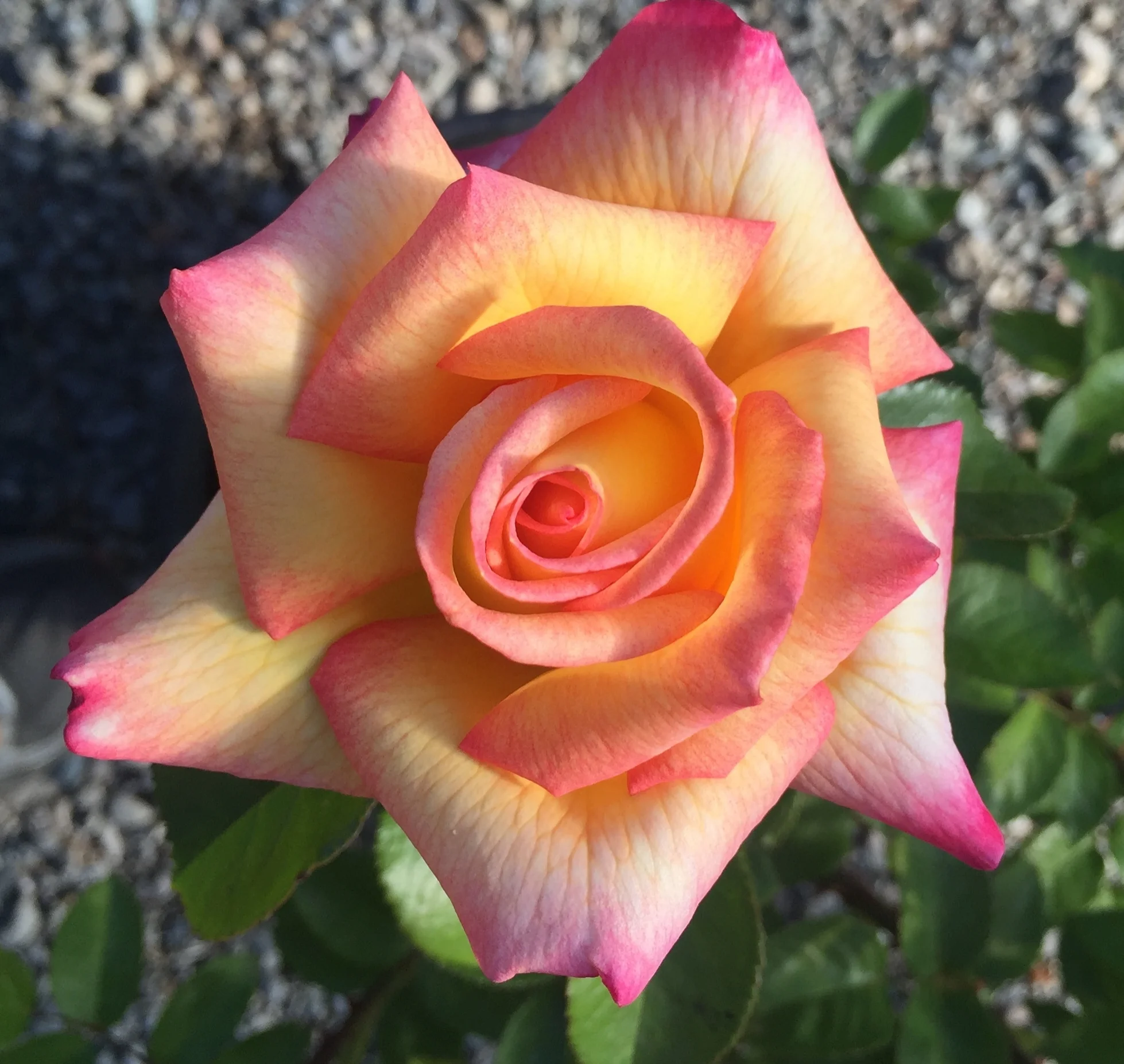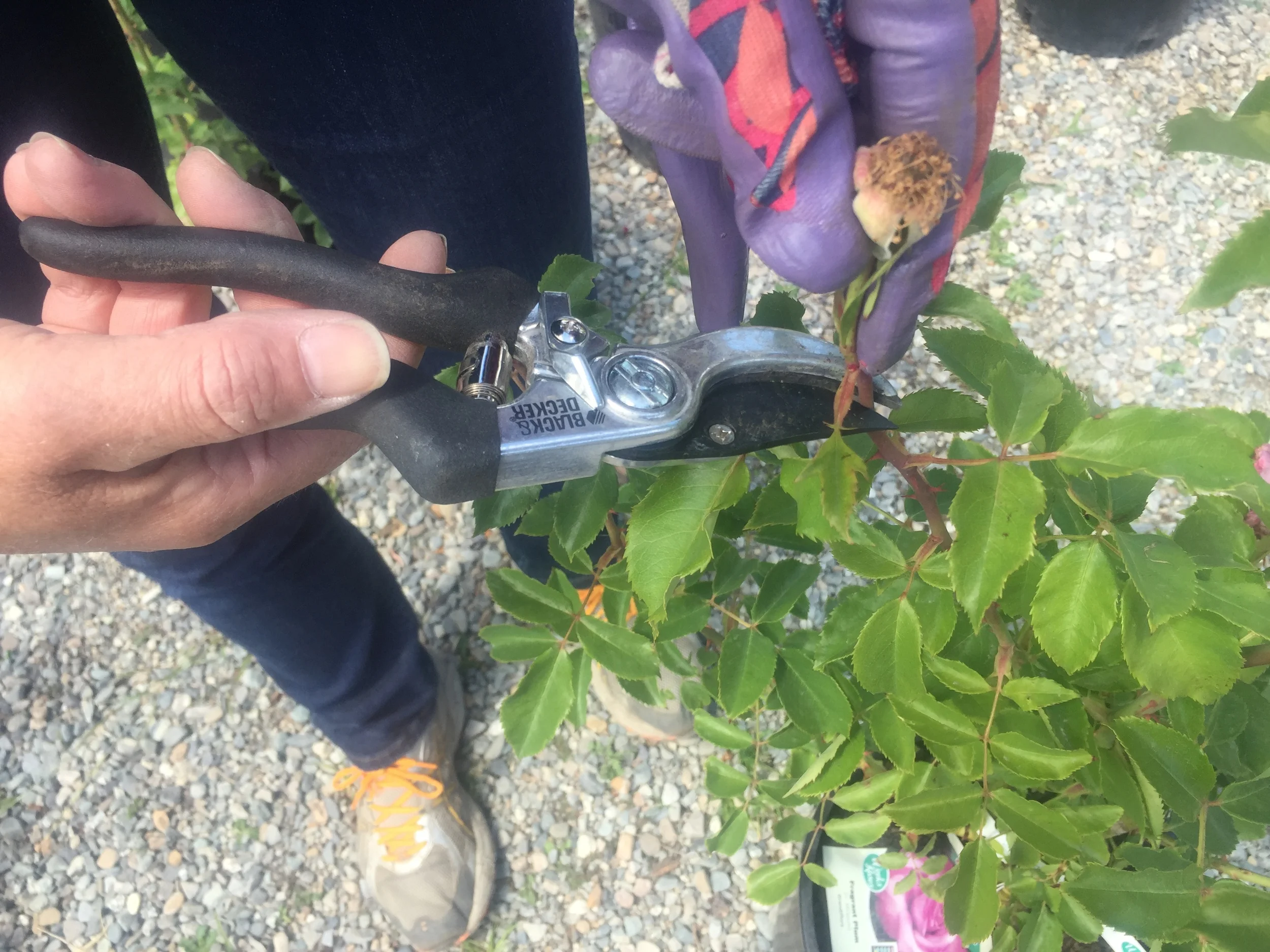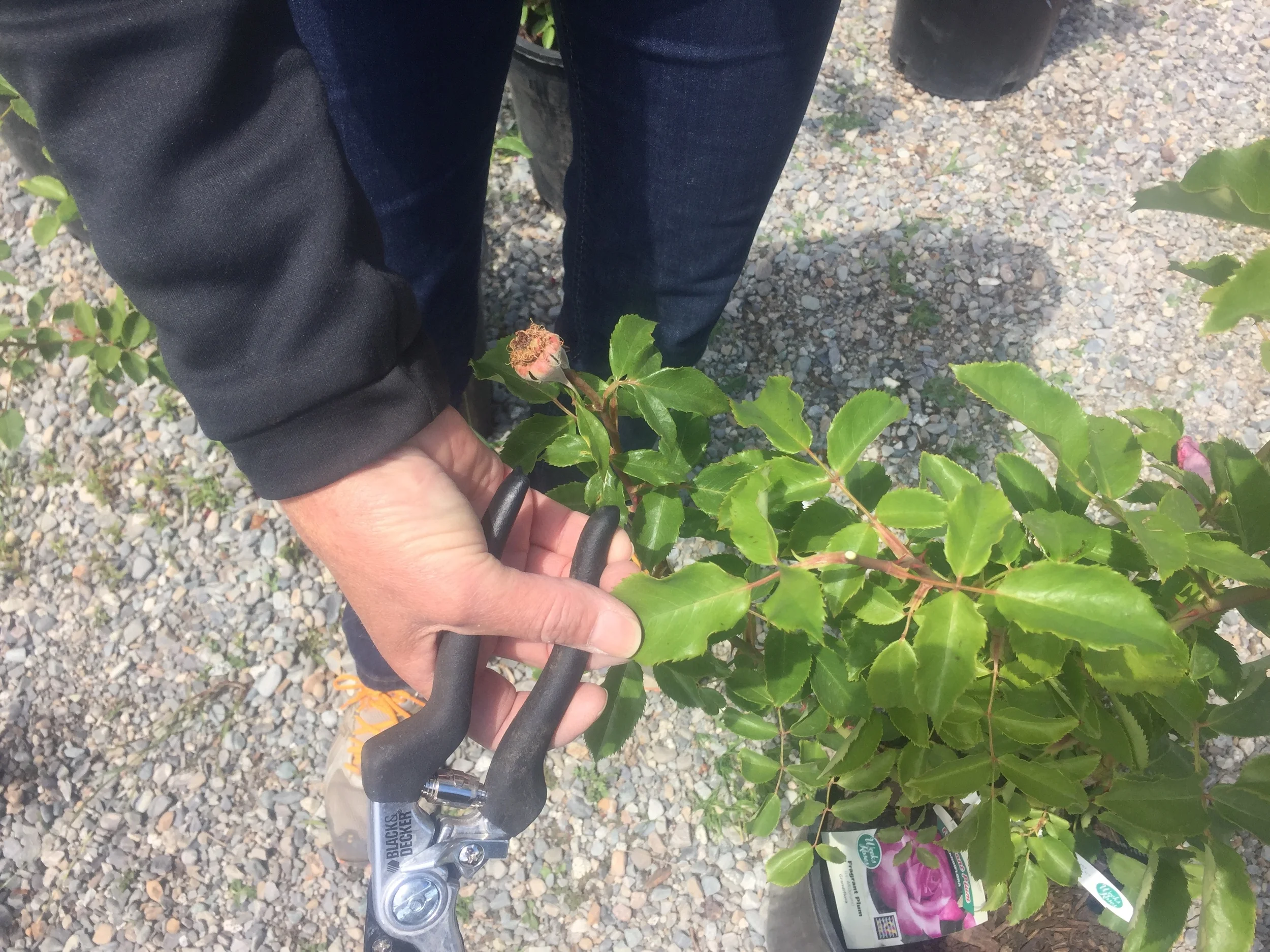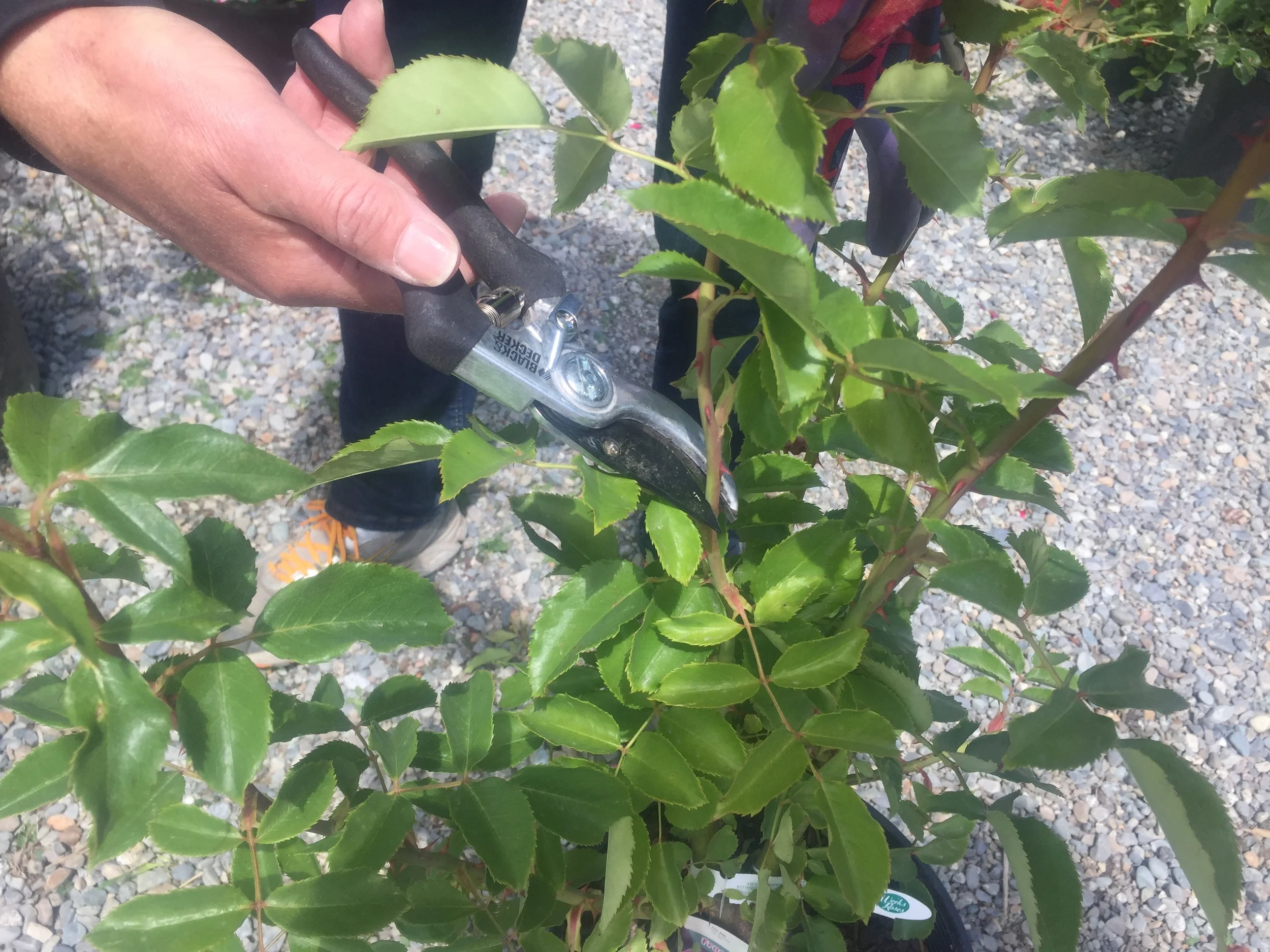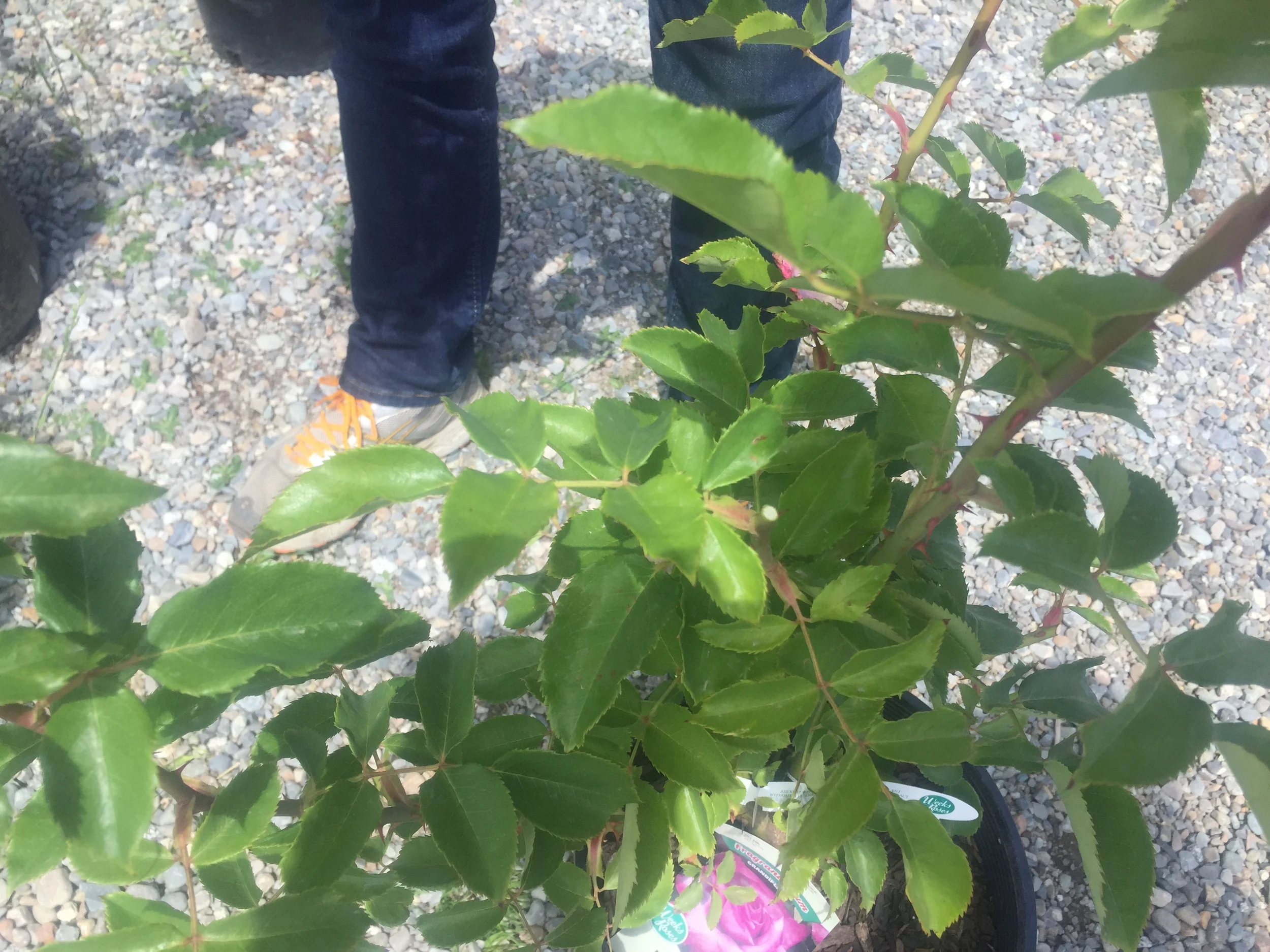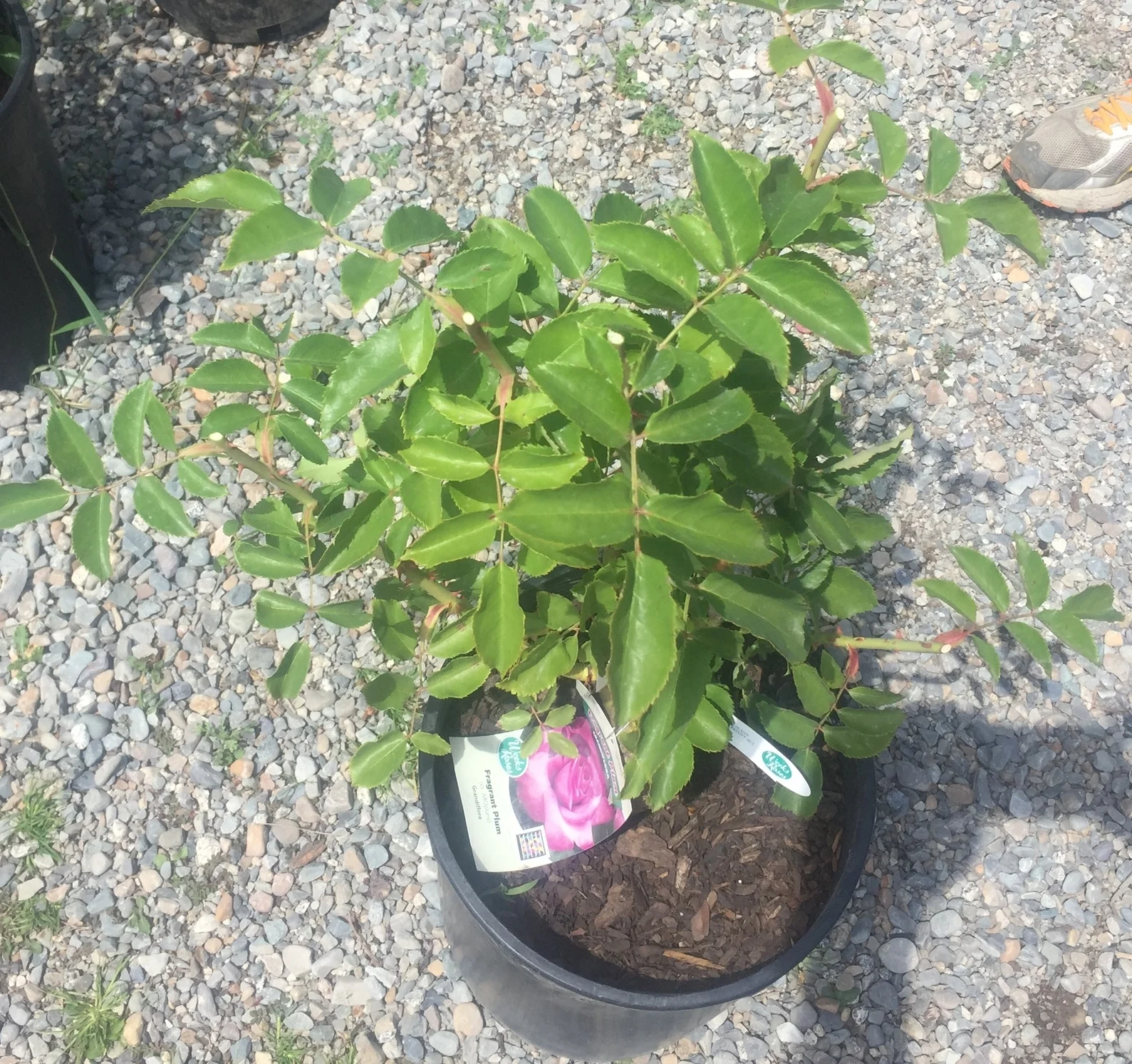Roses are summer superstars for continuous color, and tea roses have the added benefit of producing long stemmed beauties for fragrant bouquets. To encourage strong stems and repeat blooms, proper pruning is key.
After the first flush of flowers have faded, deadheading is the first step which cleans up the bush and promotes new buds. One’s first instinct is to remove just the spent rose so as to keep the plant as large as possible, but a more severe cut is actually more effective.
The basic rule of thumb is to prune to at least the first leaf that has at least five leaflets. This is a good place to start, but we recommend going down a little further on the stem preferably to an outward-facing bud/leaf. This will produce a vigorous new stem topped with a nice fat rose bud.
This habit of deeper pruning to outward facing buds will result in a rose bush with an open vase shape which encourages good air circulation which in turn discourages diseases such as powdery mildew, rust and black spot.
This method is also recommended for grandiflora (supersized tea roses) and floribunda (clustered) roses.
So next time you venture into the garden to cut some roses, be bold with your pruners! Your rose bushes will reward you throughout the season.

